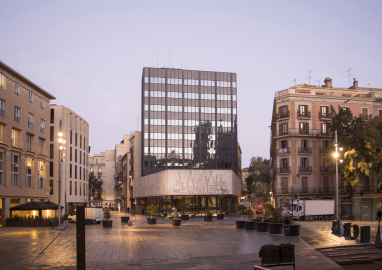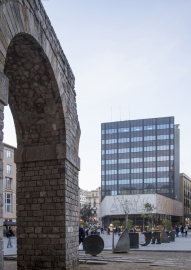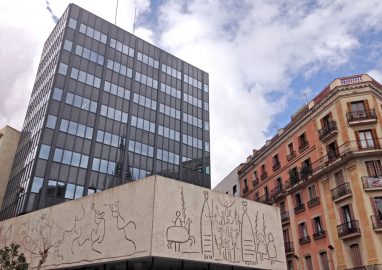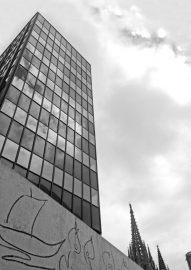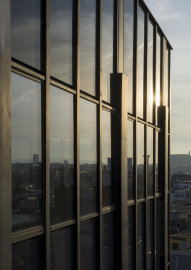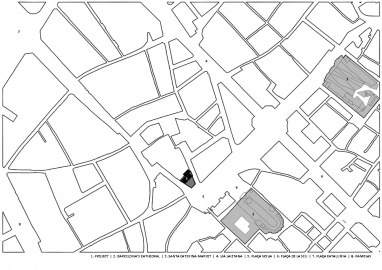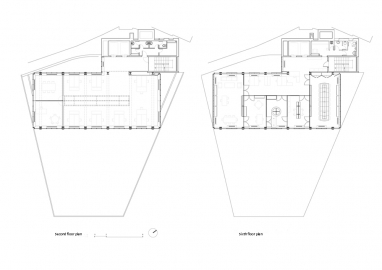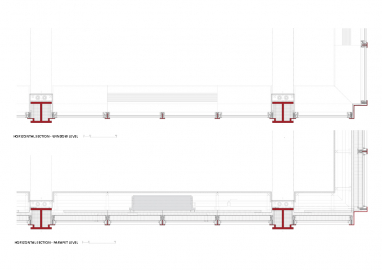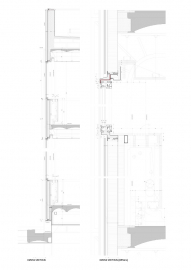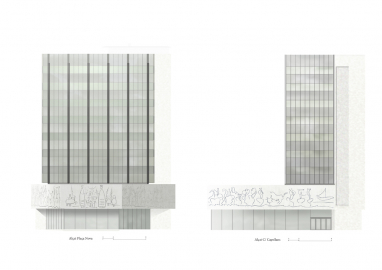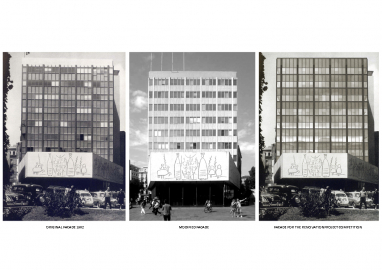Restoration and environmental upgrade of the Architects' Association of Catalonia Headquarters
Renovation and environmental improvement of the facade and the recovery and improvement of the office floors of the Headquarters of the Architects Association of Catalonia (COAC) in Barcelona, recovering the spirit of the original 1960's modern facade of the building, one of the rare examples of International Style in Catalonia.
The design focused on a reinterpretation of the facade that highlights the main attributes of the original proposal, which Busquets presented to the competition of 1958, that following the modern typology of "tower with platform", simply confronted a low body, with a neutral backdrop, the one with the office floors.
Our own view to address the competition for the renovation and improving of the facade was that of just to preserve and reinforce what was the essence of the original proposal: the special tension established between the monumental platform, decorated with Picasso's sgraffito, and the body in height of the office floors.
Strengthening the neutrality of the background, we value more the base of the building as a piece of art. By doing that, other options that were less faithful to the original spirit of the building were discarded.
Being aware that a project like this can be addressed from different perspectives, the proposal opts for a critic fidelity to the original design, instead of an approach with an alternative language, preserving the original form conceived by Xavier Busquets on his first design presented to the competition, held to choose the design for the new headquarters of the Architects Association of Catalonia in the late 50's, but improving the performance in both quality of the materials and construction details as well as the energetic efficiency of the whole set.
This re-reading lead to two modifications regarding the existing building: the change of the type of the opening system of the offices windows and the suppression of the existing crowning of the building covered with ceramic tiles that was not part of Busquet's model for the original competition.
The fundamental objective of the assignment was to improve substantially the energy saving compared to the original facade. This have been achieved by:
- Incorporation of new windows system with a higher level of sealing and glass with better insulation and solar control layer.
- Improving of the insulation of the blind parapet panels of the facade.
- Coating of the opaque parapets with photovoltaic glass with a white dots layer that seek the perfect integration with the facade.
It has also incorporated a system of heat recovery of the internal ventilation of the building. With these interventions, a 50% reduction in the energy demand is achieved, allowing to reach up to 70% in the future if other complementary measures are implemented.
Internally, the entire technical system derivative from the photovoltaic panels of the facade is integrated into the furniture, designed as an interior component of the facade on each floor.
Other passive climate and solar control systems, such as adjustable blinds, have also been planned as an integrated part of the interior finish design of the facade, which is generally perceived as an integrated piece of architecture as a whole.

